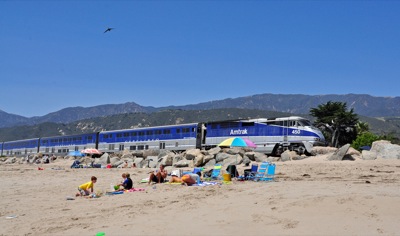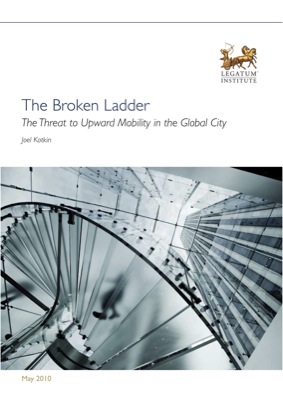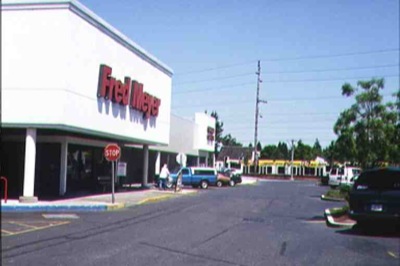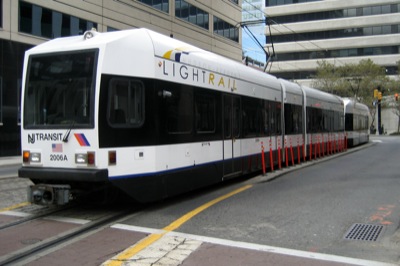Here’s a brilliant idea from a disappointing governator who ran as a fiscal conservative but then helped his state run up tens of billions of dollars of deficits: build a “demonstration” high-speed rail project from Los Angeles to San Diego. The trains would use existing tracks and so would be moderate-speed rail, not true high-speed rail. Schwarzenegger hopes to see it completed before he leaves office so that people can see the benefits of California’s true high-speed rail project that won’t be completed before 2020.

The top speed of Amtrak’s Pacific Surfliner from L.A. to San Diego is 90 mph. Schwarzenegger could spend a billion dollars on this route, but BNSF would still restrict the top speed to 90 mph.
Flickr photo by Snap Man.
Other than the fact that nobody has any money to do what Schwarzenegger proposes to do, one major problem is that the BNSF Railway, whose tracks the trains would use, has a policy that passenger trains may not go more than 90 mph on its tracks. CSX has a similar policy; Norfolk Southern’s limit is 79 mph. Of the nation’s four largest railroads, only the Union Pacific has agreed to allow trains as fast as 110 mph on its tracks, and then only if the government spends billions adding new tracks for both passenger and freight trains to run on.











